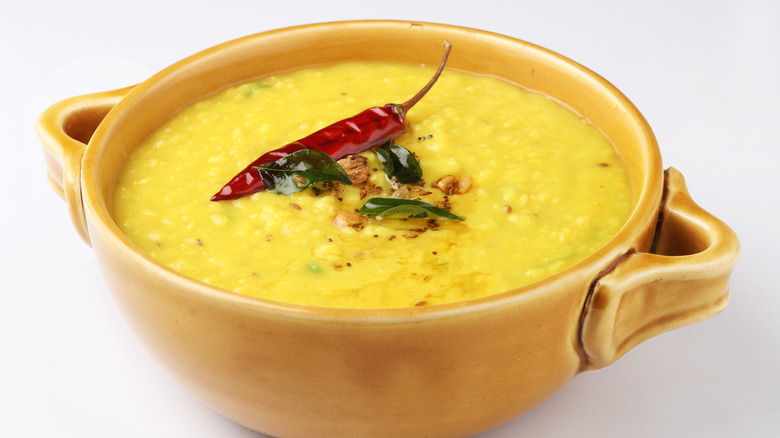The Ingredients You're Unlikely To Find In Traditional Indian Food
When we think of Indian dishes we think of classics like chicken tikka masala, vindaloo, naan, and biryani. And, of course, there's curry, that glorious blend of herbs and spices that immediately conjures images of colorful stews and flavorful sauces. This is the food we all know, the cuisine that has been exported and popularized worldwide. Palate Culinary Academy chalks this popularity up to simplicity, diversity, and nutritional benefits. There's also the fact that it just tastes good.
But the food we know as Indian is not the complete picture. While Indian food has evolved over the last few centuries, several myths persist about the cuisine. As Spruce Eats lists, the idea that all Indian food is hot and spicy, fatty and unhealthy, or overloaded with curry powder is all false. Traditional foods, the stuff that lies at the heart of Indian culture, exist well beyond the confines of Western generalizations. These are the foods cooked in homes and villages for holidays or ceremonies, and almost none of them contain the ingredients we all think of as "Indian."
Ingredients of tradition
The potatoes, tomatoes, peas, and carrots common across Indian cuisine today? All of that came from traders and merchants during the latter half of the 18th century. Not a single one is truly native to India. Yasaswini Sampathkumar writing for the BBC states that there is an entire world of recipes and ingredients that "have existed on the subcontinent for at least a millennium." There is a wide array of traditional Indian dishes that exist outside the purview of modern Indian cooking.
One such meal, as Sampathkumar writes, is a religious rite known as shraadha. This is a meal that is eaten on the anniversary of the death of a loved one. The ingredients consist of raw banana and banana stems, broad beans, sweet potatoes, unripe mangoes, taro roots, and pirandai (veld grape). All of this is seasoned with salt, black pepper, and cumin, and served with yellow mung dal — a type of lentil stew (via Bon Appétit). All of the ingredients showcased are completely native to the Indian subcontinent. So while the world takes in the brilliant export that is modern Indian cooking, the families of this vast nation are still enjoying the native fruits their soil has to offer.

